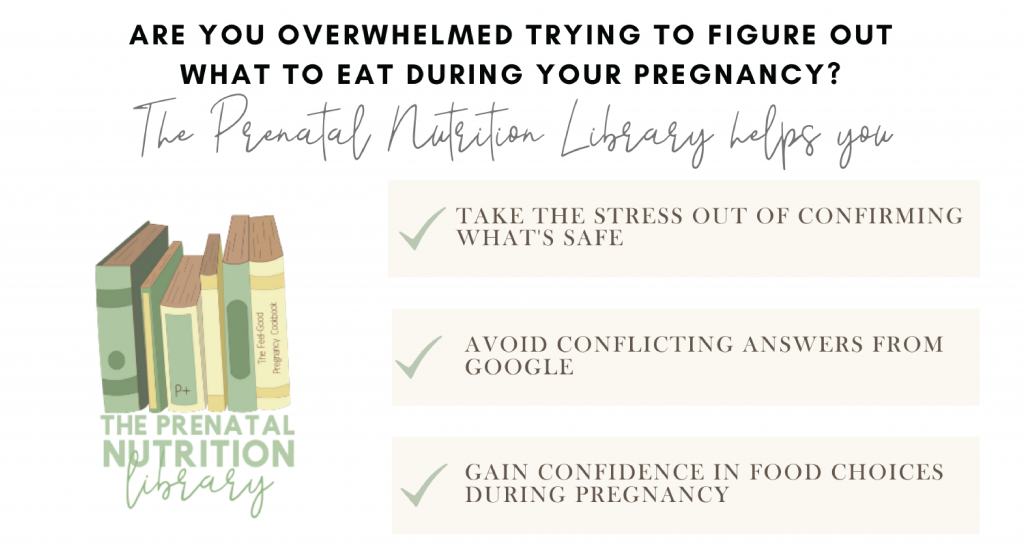Can I Take Omega 3 Vitamins While Pregnant
Omega-3 in Pregnancy
Why we should NOT avoid fish during pregnancy
There is a common misconception surrounding pregnancy that suggests women shouldn't consume fish. As it may contain toxic amounts of mercury and potential for food poisoning. While a valid concern, this shouldn't scare women from including fish or fish oils in their diet.
Fish are full of vitamins and minerals, specifically omega-3 fatty acids (EPA + DHA)! While other foods contain omega-3 fatty acids, like flaxseed or flaxseed oil, the EPA+DHA in fish is more bioavailable. Meaning they are easier for your body to utilize.
It is great to include high-quality fish , like salmon, tuna, sardines, anchovies, and herring, or a high-quality fish oil supplement ensuring you and baby are safe and getting a plethora of vitamins and minerals! Additionally, consume fish in moderation. Two to three servings of fish a week will do the trick for most women!
According to the American Pregnancy Association, "Omega-3s are a family of long-chain polyunsaturated fatty acids that are essential nutrients for health and development.
Unfortunately, these are not synthesized by the human body. And therefore must be obtained from diet or supplementation . The two most beneficial omega-3s are EPA and DHA. EPA supports the heart, immune system, and inflammatory response.
DHA supports the brain, eyes, and central nervous system. Which is why it is uniquely important for pregnant and lactating women." Omega-3s are imperative for the production of prostaglandins, which are hormone-like substances necessary for healthy blood clotting, anti-inflammatory responses, kidney function, and blood pressure. Additionally, they help to battle heart disease and improve cognitive function. You can see why these would be beneficial during pregnancy and lactation!
Does a mother's consumption of omega-3s have a positive effect on the baby as well? I'm glad you asked!
Omega-3s, according to the American Pregnancy Association, "have been found to be essential for both neurological and early visual development of the baby". Additionally, a study completed in 2017 looked at the correlation between omega-3 fatty acids combined with Vitamin D supplementation in pregnant women with gestational diabetes. Of 120 women studied, subjects who received Vitamin D and omega-3s in combination showed improvement in inflammation, oxidative stress, and fewer births resulting in hyperbilirubinemia (causing jaundice) and newborn hospitalization (Razavi, et al. 2017).
So, how do you know which fish are safe to eat and how much to consume to reach your weekly omega-3 goal?
A good rule of thumb is to trust your nose–your nose knows!
If the fish you are consuming smells fishy , it may be best to opt for another protein source this time. While it may seem contradictory, fish shouldn't smell fishy . If it does, that means the oil in the fish has begun to degrade and turn rancid.
According to the NCBI National Institute of Health Library, pregnant women require ~650 mg omega-3s per day, of which 300 mg are DHA. Some research shows up to 2200 mg of DHA per day is beneficial (Dunstan et al. 2008). The nutrition care manual provides a chart of omega-3 containing foods:
Foods High in EPA and DHA
| Food | Serving Size | Grams (g) of Omega-3 Fatty Acids |
| Herring fish | 1 fillet (5 ounces) | 3.1 |
| Fish oil | 1 tablespoon | 2.9 |
| Mackerel | 1 fillet (4 ounces) | 2.6 |
| Salmon | 3 ounces | 1.5 |
| Rainbow trout | 1 fillet (5 ounces) | 1.4 |
| Halibut | 3 ounces | 1 |
| Fish oil, cod liver | 1 teaspoon | 0.8 |
| Tuna (canned) | 3 ounces | 0.7 |
| Rockfish | 1 fillet (5 ounces) | 0.6 |
| Shrimp | ½ cup | 0.4 |
| Catfish | 1 fillet (5 ounces) | 0.3 |
If you aren't a fan of fish, it is likely that you will need to supplement with DHA/EPA.
Additionally, the Nutrition Care Manual provides this chart of non-fish ALA omega-3 rich foods. But it is important to note that you will not meet your DHA needs by consuming the foods from the list below alone . ALA is converted to DHA but at a very poor rate.
Foods High in ALA
Foods containing ALA are vegetarian and vegan-friendly.
| Food | Serving Size | Grams (g) of Omega-3 Fatty Acids |
| Flaxseed oil | 1 tablespoon | 7.3 |
| Chia seeds | 1 tablespoon | 7.0 |
| Flaxseed (ground) | 1 tablespoon | 1.6 |
| Black walnuts | ½ cup | 1.7 |
| Hemp seeds | 1 tablespoon | 0.9 |
| Navy beans | ½ cup | 0.6 |
| Edamame | ½ cup | 0.3 |
| Kidney beans | ½ cup | 0.1 |
As you can see, the benefits of omega-3s far outweigh the cause for concern. As long as you are consuming fresh, low-mercury fish or other omega-3 rich foods, you and your baby should stay safe. Not only is fish tasty, but it's also a nutrient powerhouse!


References:
Greenberg, J. A., Bell, S. J., & Ausdal, W. V. (2008). Omega-3 Fatty Acid supplementation during pregnancy. Reviews in obstetrics & gynecology , 1 (4), 162–169.
Razavi, M., Jamilian, M., Samimi, M., Ebrahimi, F. A., Taghizadeh, M., Bekhradi, R., … Asemi, Z. (2017). The effects of vitamin D and omega-3 fatty acids co-supplementation on biomarkers of inflammation, oxidative stress and pregnancy outcomes in patients with gestational diabetes. Nutrition & Metabolism , 14 (1). doi: 10.1186/s12986-017-0236-9
Omega 3 Fatty Acids: FAQs. (2019, October 29). Retrieved from https://americanpregnancy.org/pregnancy-health/omega-3-fatty-acids-faqs/.
Omega-3 Fatty Acids Foods List. (n.d.). Retrieved December 17, 2019, from https://www.nutritioncaremanual.org/client_ed.cfm?ncm_client_ed_id=448.
Omega-3 Fish Oil and Pregnancy: Benefits & Proper Dosage. (2019, November 8). Retrieved from https://americanpregnancy.org/pregnancy-health/omega-3-fish-oil/
Can I Take Omega 3 Vitamins While Pregnant
Source: https://www.theprenatalnutritionist.com/omega-3-in-pregnancy/